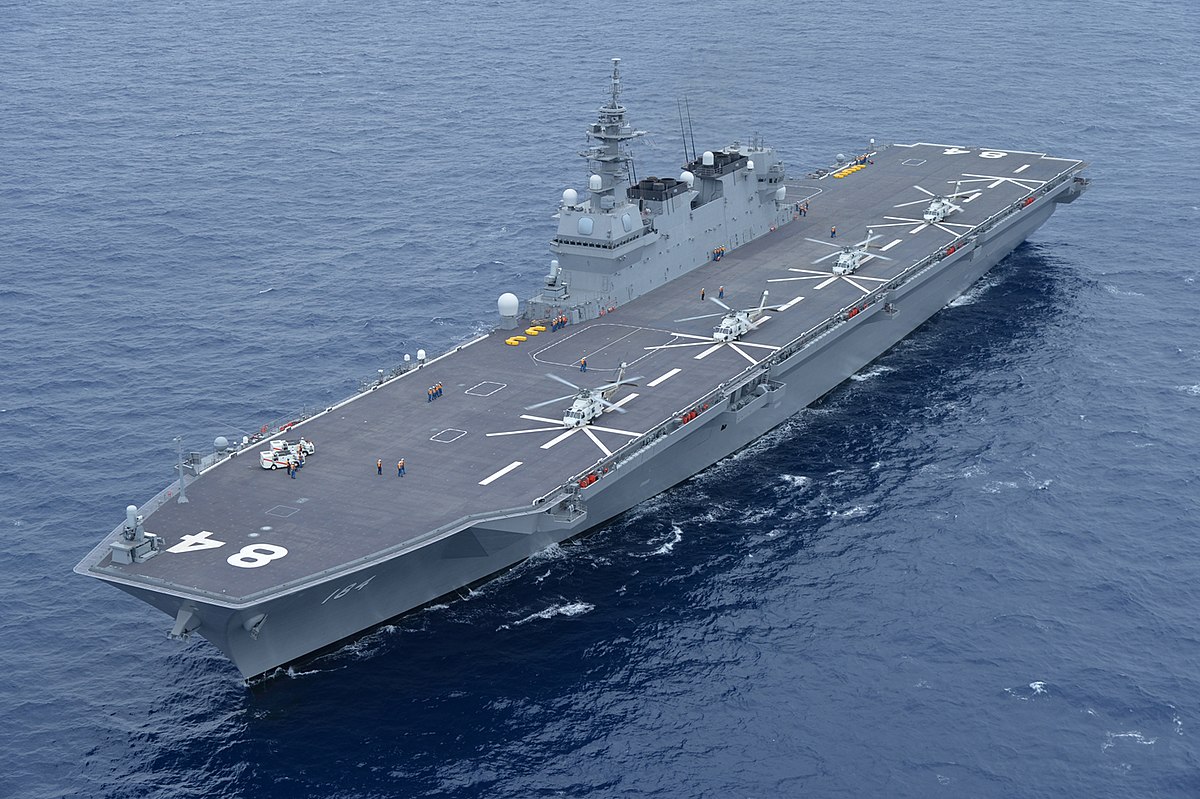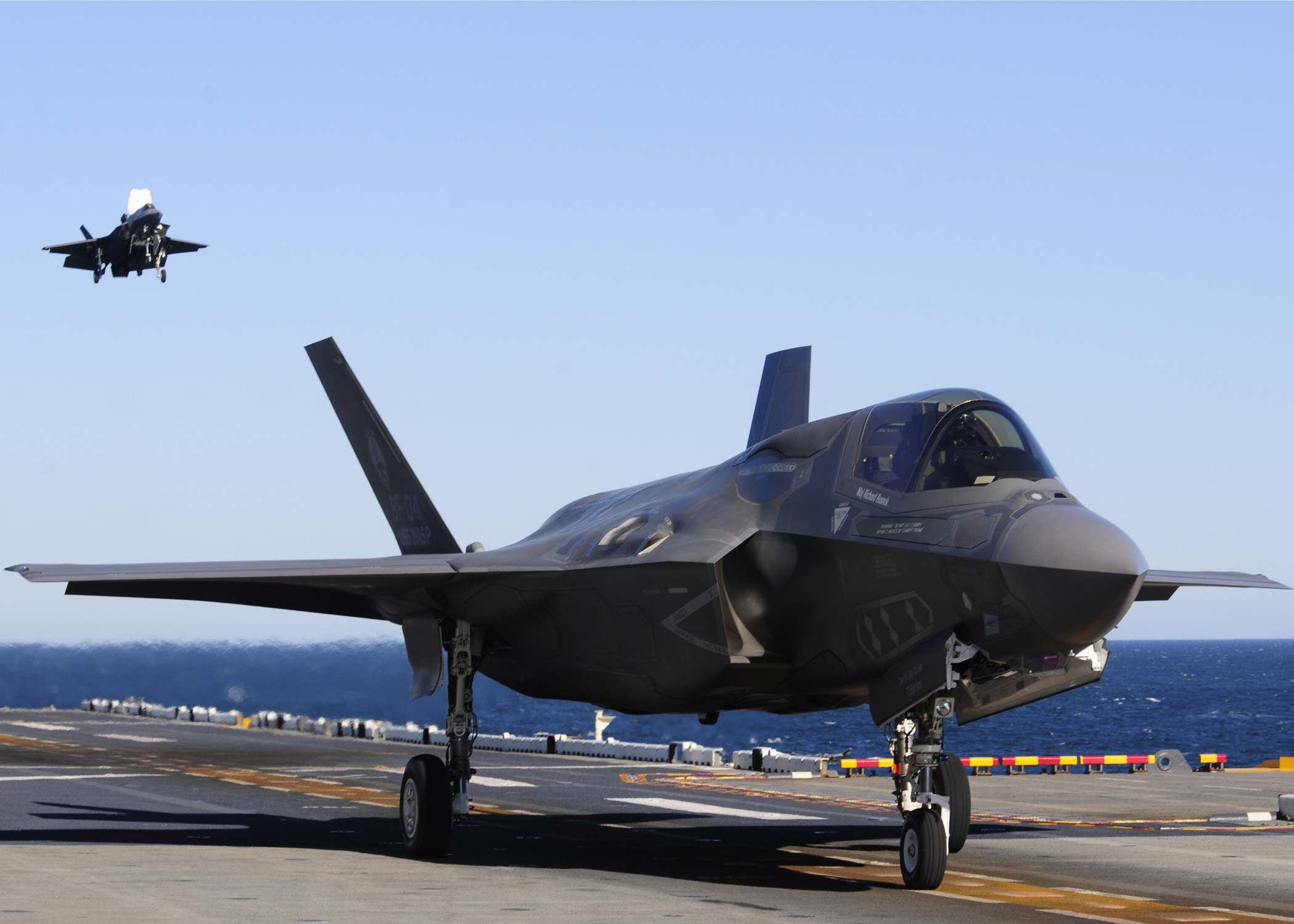The Japanese Maritime Self-Defense Force’s (JMSDF) Izumo-class helicopter carrier, JS Kaga, will soon be dispatched to the United States for testing of the F-35B Lightning II aircraft, which the carrier is geared to host in the future.
The JMSDF announced in a press release recently that the operational tests of the special modification of the destroyer Kaga will be carried out with the assistance of the U.S. Navy.
From October 5 to November 18, Kaga will conduct an F-35B development test to collect data for the ship-based operation of vertical and short-take-off fighters on Japan’s two Izumo-class carriers. The test will be conducted as part of “Indo-Pacific Deployment 2024” (IPD24).
The move comes ahead of Japan receiving the first of the 42 purchased F-35B variants of the fifth-generation stealth aircraft which will fly from two carriers. Japan has been working to convert its helicopter carriers into aircraft carriers capable of operating the F-35 STOVL variant in what appears to be an effort to counter-balance China’s burgeoning naval might.
The F-35B fifth-generation fighter jets can direct their jet engine nozzles downward, enabling short takeoff and vertical landing operations.

Moreover, the testing would be conducted just months after the JMSDF unveiled the modified multi-role helicopter carrier Kaga to the press on April 8 at its Kure Base.
At the time, Saga’s Commander, Captain Ichiro Kokubu, emphasized the significance of the vessel’s transformation, stating, “It is the first time for the MSDF to undertake such big (modification) work.”
The JS Kaga now resembles the amphibious assault ships of the US Navy’s America class. With an overall length of an astonishing 248 meters, the Izumo-class ships are the biggest surface combatants in the Japan Maritime Self-Defense Force. Experts believe that the conversion of Japan’s helicopter carriers into light aircraft carriers would enhance Japan’s territorial defense capability.

JS Kaga has not really been tested with the F-35B fighters, but it has regularly welcomed and inspected friendly nations’ aircraft carriers carrying F-35 aircraft.
For instance, late last month, Japanese officials visited the Italian carrier Cavour to assess and understand how aircraft operate from a carrier. Last year, Japanese military officers watched British F-35Bs perform short takeoffs and vertical landings on board the British Royal Navy carrier HMS Prince of Wales.
The acquisition of carrier-capable F-35 aircraft and the adaptation of helicopter carriers to support these fighters constitute a significant element of an extended strategy focused on military modernization and the adoption of a more offensive posture amid escalating security threats.
According to reports, Japan will acquire F-35B fighters and may base them at Nyutabaru, Tokyo, in a bid to establish deterrence and project power over the remote southern islands, including the Senkaku Islands.
China’s actions in the East China Sea and Taiwan Strait increase the necessity of conducting carrier operations with cutting-edge fighter jets. A Chinese Navy survey vessel, for example, momentarily entered Japanese territorial waters.
F-35s Will Fly From Japan’s Heavily Modified Carriers
The Izumo carrier underwent modifications in 2021 and the refit of the JS Kaga started in March 2022 at the Kure shipyard located in Hiroshima.
Japan’s multi-role helicopter carrier can now accommodate fixed-wing fighters following two years of substantial modifications. Kaga’s capabilities and construction underwent significant changes to make it a seagoing base for F-35Bs.
Among other major improvements, the ship’s flat deck has been redesigned to withstand the exhaust heat generated by the fighters’ vertical takeoff and landing.
To assist aircraft during operations, prominent takeoff markings, including a distinct yellow line, have been implemented, and the deck has been coated with a heat-resistant material.
In addition, the Kaga’s trapezoid-shaped bow was changed to a rectangle to mitigate turbulence during takeoff and guarantee a safe operating distance. The Kaga’s design has been adjusted to resemble aircraft carriers.
The Izumo has already undergone its first phase of modification, which focused on painting the aircraft’s flight deck with heat-resistant paint. The second stage of Izumo’s conversion will likely start towards the end of this year or early April 2025 to meet the Fiscal Year 2024 target date (Japan’s fiscal year runs from April 1 to March 31).
This conversion will involve converting the rectangular deck and setting up the interior compartments and components for F-35B operations, such as magazines for storing F-35B munitions.

According to USNI News, the exact interior design will be determined by the outcomes of Kaga’s trials, which will involve the JMSDF witnessing real F-35B movements on Kaga’s new deck arrangement.
As Izumo will undertake the deck conversion initially, there will be sufficient opportunity to analyze the results of the Kaga trials and determine the optimal interior configuration for the necessary internal modifications.
Izumo is projected to finish its upgrades by late FY 2026 alongside Kaga. Following Izumo’s return to the fleet, its interiors will be modified.
Izumo has already tested the concept with F-35B aircraft from the US Marine Corps. Due to the vessel’s unmodified flight deck, USMC F-35Bs conducted very short takeoffs in late 2021.
- Contact the author at sakshi.tiwari9555 (at) gmail.com
- Follow EurAsian Times on Google News




